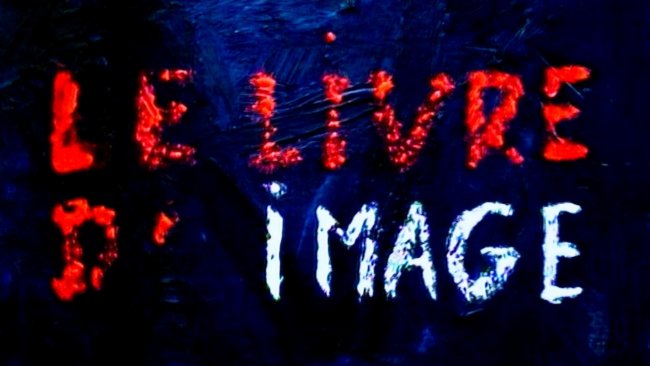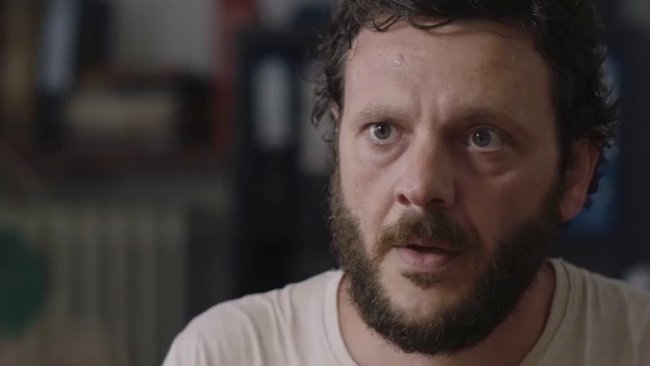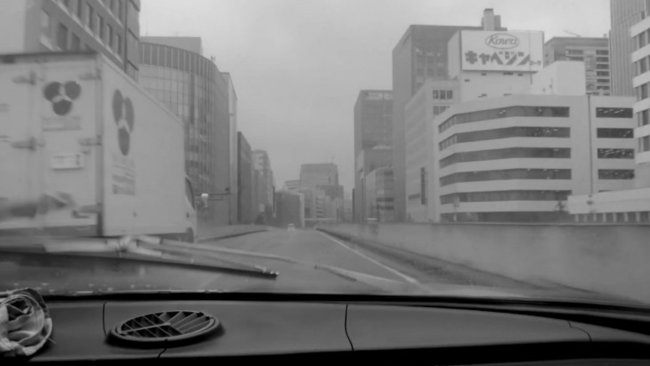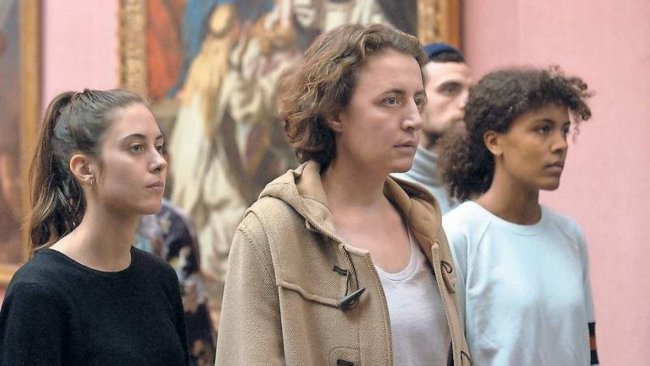Satan Said Dance
[…] Following this thread, I see a different filmic structure to the fragmented, Instagramish, puzzle that has been commonly assigned. Director Katarzyna Rosłaniec is playful with the medium and uses the glossy, gritty aesthetics of night-club culture to create the rhythm of shots that differ in composition and style.
[…] There is a strong sense of Rosłaniec driving the moving image toward highly composed stills, most often in the scenes with “the photographer” Leon.
Text: Jodie McNeilly
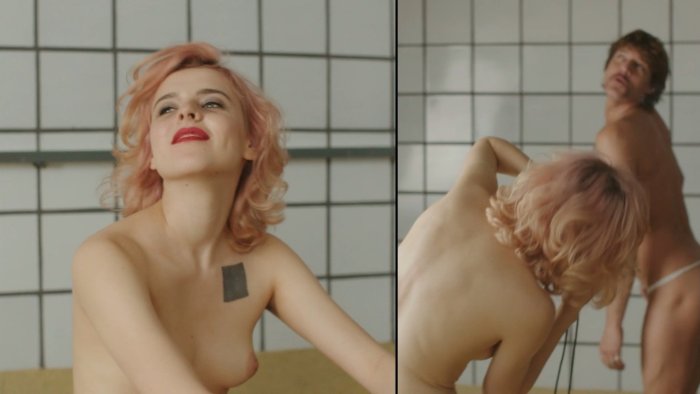
The film opens with Karolina (Magdalena Berus) in the wake of publishing her successful and morally dubious debut novel Doll. We are slammed immediately into what appears to be the heightened, substance–fuelled, and clichéd life of a rock n’ roll star on a rapid downward spiral, rather than a 20-something novelist. Interestingly, Nick Tosches’ book on the sordidness of the rock industry is entitled Save the Last Dance for Satan (2011), but the film’s own title Satan Said Dance denotes a difference between the figure of the coke-soaked rocker riding a troubled wave of success to only crash and burn, or find Jesus, and Karolina, who with a “failing heart”, spends the entirety of the film snorting, fucking, and doing very little writing as she dances (more than her heart out) in slogan emblazoned t-shirts with unparalleled intensity toward her death.
Several moments in the film affirm Karolina’s relish for life being towards death as pure gluttony. She rams with her body, rather than intellect everyone’s boundaries. This drive is perilous, and sustained. She is a young woman doing more than throwing up jars of peanut butter and conserves. She ingests the world and everyone around her to stay empty; the true bulimic wants nothing more than to be empty.
There is a strong comment on social media platforms that construct the self. But I managed to turn a blind–eye at this attempt in order to get something more from the filmmaker’s efforts. I am more interested in Karolina “the writer”, and how we can place her within the tradition of novelists’ own obsessions with their experiences, fantasies, and frames for writing a world. It is a misnomer to blame egotistical absorption only on social media. Particularly so in this narrative where we have a writer with the autobiographical always in play. This point is given attention in Karolina’s meeting with her publisher who questions whether the protagonist of the novel is her. Karolina’s denial begins to both unravel and construct her identity as that “three times per day masturbating”, pop-trash-poet who spends a lot of time naked, or in mini-skirts in the freezing Polish weather.
Following this thread, I see a different filmic structure to the fragmented, Instagramish, puzzle that has been commonly assigned. Director Katarzyna Rosłaniec is playful with the medium and uses the glossy, gritty aesthetics of night-club culture to create the rhythm of shots that differ in composition and style. We find a locked off frame shot at mid-range to observe the interior stillness and estrangement of a family meal. It magnifies the stagnancy of familial relations between Karolina and her mother (Danuta Stenka) who pampers her doll-like pooches in a compensatory maternal way, her father, who doles out “100s” as tradition, and her strikingly beautiful sister Matylda whom Karolina berates and cruelly manipulates. These are juxtaposed with the many explicit sex scenes that are filmed with the commitment of a pornographer who wants us to not only see, but also feel. Overhead, whole body, durational shots capture the horizontal action, punctuating other manifestations of excess that constitute Karolina’s chaotic day. There is a strong sense of Rosłaniec driving the moving image toward highly composed stills, most often in the scenes with “the photographer” Leon (Tygo Gernandt). Here where we are drawn more into her visual language than the dialogue. This is true of the scene where the girls lie Ophelia-like, covered in foam from a fire hydrant on the bathroom floor of a derelict hospital, now the site of one of their parties and Karolina’s own prose. With animation, a doll’s face is plastered upon a still image of Karolina’s face, now more innocent and fragile in sepia tones. Her writing from Doll, or perhaps the sequel that fails to find its existence on the page, is spoken over the top at amphetamine velocity, such that identities become enmeshed and confused.
In another scene Karolina allows the water of her bath to overflow while she sleeps. The foley (Ronnie van der Veer) is used to strong effect as we hear knocking at the door, the sound of water filling the apartment and Karolina vacillating in no linear order from a comatose sleep, opening the front door, and diving under her bed covers to shut out existence. This sound of water paradoxically fills and leaks out beyond any container, never to find the page again. Whether literature or not, Karolina cares about her writing because she cannot.
It is very easy to dismiss this film as vacuous and self-indulgent as its protagonist appears at times to be. To take something from this film, one needs to join Karolina’s journey of exploits with as much viscerality and conviction as the cast, or engage with Karolina the writer (why make her one in the first place if it isn’t significant?) and allow the style and structure of the film to support that. I particularly enjoyed the wardrobe, and dropping in on some of Warsaw’s industrial conversions into restaurants and party venues where the new middle-class pimp and parade their kaleidoscopic wears.
This article contains a third-party video. If you would like to watch the video, please adjust your settings.
Info
Satan Said Dance | Film | Katarzyna Rosłaniec | PL-NL 2016 | 97’ | Geneva International Film Festival 2017
First published: November 13, 2017
